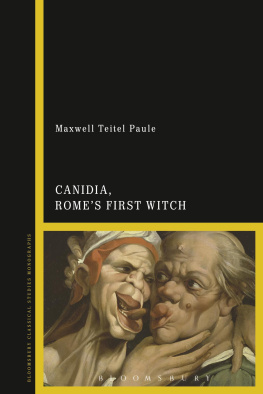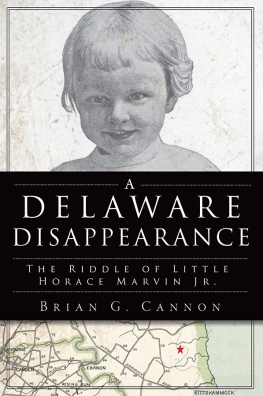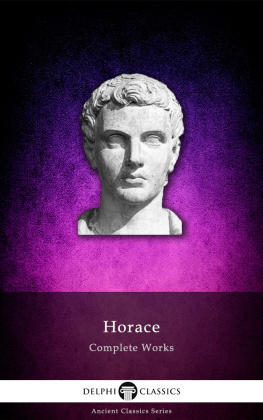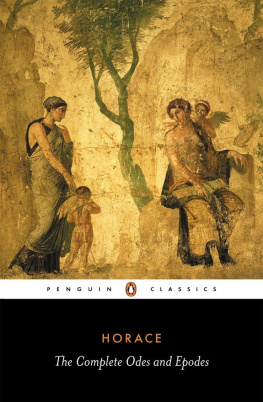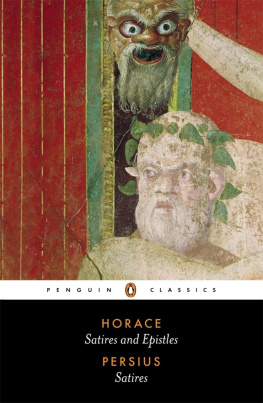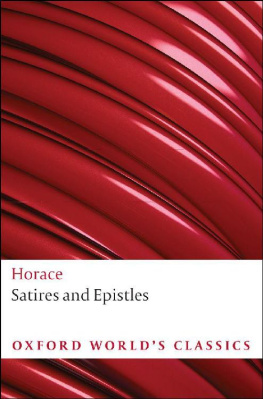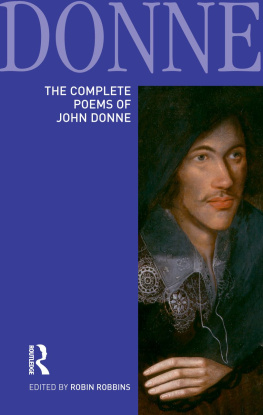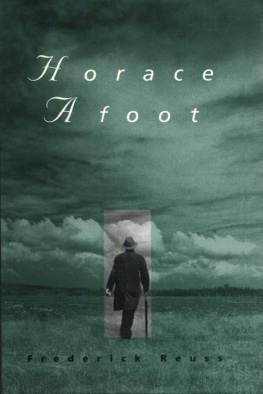Canidia,
Romes First Witch
For Sara
Also available from Bloomsbury
Ancient Magic and the Supernatural in the Modern Visual and Performing Arts, edited by Filippo Carl and Irene Berti
The Satires of Horace, edited by John Godwin
Seduction and Power, edited by Silke Knippschild and Marta Garcia Morcillo
Women in Ancient Rome, Bonnie MacLachlan

Contents
Figures
Burney Relief
Harpy Tomb pediment detail
Phyllis seated on the back of Aristotle who crawls on all fours
Tables
Thematic comparison of Ver. Eclogue 4 and Hor. Epode 5
Frequency of quotations of and references to the Epodes
I owe a great many people a great deal of thanks. At Oberlin College, Kirk Ormand and Thomas Van Nortwick helped me shape the beginnings of the project that would later become the topic of the dissertation that I wrote under the guidance of Fritz Graf, Sarah Iles Johnston and Richard Fletcher while at The Ohio State University, and which forms the basis of this book. Without their help, none of this would have been possible.
I also owe a debt of gratitude to Kendra Eshleman for her valuable writing advice, to Micky Jo Myers for her help with editing, and to the many audience members and anonymous readers who have given me careful feedback on this project throughout its various incarnations.
Finally I want to thank my wife, Sara Paule, for everything. For talking, for listening, for editing and encouraging and cajoling. You are the best.
At the beginning of Chapters II through V, I have included out of consideration for the reader the full Latin text and my own translation of the principal poem(s) under investigation. This is done purely for the readers convenience and what follows is not meant to function as a critical edition of these poems. For the Latin, I primarily follow Klingners 1959 text and while in the translations I aim to adhere closely to the Latin, I do allow myself some small freedoms in the pursuit of an English text that will read smoothly and naturally to those not already familiar with it.
Introduction
Canidia is one of the most well attested witches in Latin literature. She has a prominent role in three of Horaces poems and is mentioned by name in three others. Throughout Horaces Epodes and Satires she desecrates graves, kidnaps, murders, poisons, and tortures. In one poem she invades the gardens of Maecenas where she rips apart a lamb with her teeth and summons the dead. In another poem, she starves a Roman child to death so she can harvest his desiccated organs, and in another she uses her spells to prevent Horace from killing himselffor the sole purpose of continuing to torment him. She is the dark anti-muse of Horaces poetry: closing rather than opening two of his books of poetry, Canidia is repeatedly set in opposition to Horaces literary patron and at one point personifies the authors collection of vitriolic poetry.
Yet Canidia has received little in the way of extensive scholarly analysis. She has never been the exclusive subject of single book, and has been the primary subject of only a handful of articles. Most scholarship on Canidia has limited itself either to exploring her role within a single poem, The most extensive treatment of her is the Enciclopedia Orazianas entry on Canidia (Cavarzere 1996: 66870). It is three pages long.
The decision to make Canidia the focus of this book was due both to this dearth of scholarship about her as a character unto herself and because, in this absence, the majority of readily-available information about Canidia and her place within Horaces poetry is colored primarily by what the scholiasts have said of her, chiefly that the name Canidia was a pseudonym for Gratidia, a perfume seller from Naples with whom Horace was romantically involved; when the relationship ended (poorly), Horace vented his anger through his poetry, thus creating the vile, over-sexed, elderly hag that is Canidia as a stand-in for his former lover.
The following pages are thus a deconstruction of this and other explanations of Canidias historical origins. Canidia is best treated as a fictional character, specifically that of a Roman witch, and due to the complexities of Roman witches the second section of this chapter outlines how these characters function as demonic figures, fluid entities whose attributes change according to the contexts in which they are deployed. This approach runs counter to recent scholarship that defines Roman witches as a uniform category of characters who all operate according to the same unchanging guidelines but, as will become clear throughout the book, Canidias six appearances in Horaces poetry cannot logically be understood as belonging to a static being; her function in one poem is directly contradicted by her performance in another. Far from being problematic, this only underscores the importance of reading Canidiaand others like heras a demonic figure whose traits Horace can adapt to fit his changing poetic needs. Recognizing this will allow us to assess Canidias role in each poem based on her actions in that specific context without trying to construct an elaborate narrative to explain how her actions in one poem necessarily relate to her (often contradictory) actions in every other one, or howas a witchCanidias actions are supposed to fall in line with any number of other characters who have also been labeled as witches. Shedding these unnecessary entanglements enables more accurate interpretations of the roles Canidia plays, which in turn facilitates our understanding of the poems in which she appears.
The Historical Canidia
Despite all of Horaces attention to her, Canidias character still remains a mystery. The evidence for her historical existence is sparse; what little we do know is, as mentioned above, largely derived from information provided by the scholiasts Lycoris for Cytheris, just as Catullus was famously to have dubbed Clodia Lesbia. Following this practice, Horace is presumed to have concealed Gratidias true name under the pseudonym Canidia.
We are toldagain by our scholiaststhat Gratidia was a producer and seller of perfumes (an unguentaria) who lived in Naples.
Yet the very idea that Canidias true identity is Gratidia, a perfumer from Naples, is most likely a fanciful construct of the scholiasts, cobbled together from lines of Horaces own poetry. In
Thus, all of the historical details we possess about Canidia either come directly from Horaces poetry or from the scholiasts who were extrapolating from that same poetry. There is no external evidence to corroborate even the existence of a Neapolitan Gratidia, let alone to verify her as the basis for Horaces Canidia. In fact, the biographer Suetonius (active roughly a century after Horaces death, and at least a century prior to any of the Horatian scholiasts) wrote a brief tract on the poets life (Suet. Poet. 40) in which, although he included such salacious pseudo-biographical details as Horaces preference for hanging mirrors in his bedroom for the express purpose of watching himself and his partner having sex, Suetonius makes no mention whatsoever of Canidia or Gratidia. His silence in this regard, while by no means to be taken as firm evidence, casts further doubt on the existence of a historical Canidia, especially given Suetonius propensity to record tabloid-quality gossip.
Fortunately, modern scholars who have speculated as to Canidias identity have largely moved beyond the scholiasts reliance on Horaces own writing. Of those investigating the potential reality or source of Canidias character, there are those who would see her character as representative of either a real person or group of people, and those who would see her as a purely literary construct. Others fall somewhere in the middle, acknowledging Canidias probable roots in reality while recognizing the necessarily fictional nature of her character as it exists in Horaces poetry. First, let us turn to the potential historical sources posited for Canidias character.

